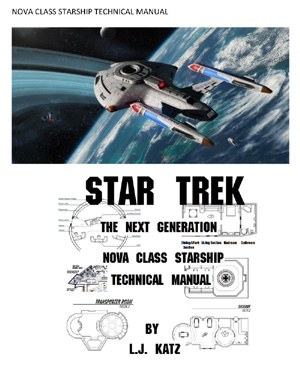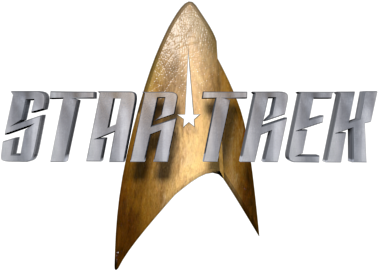There are 24 active users currently online.
Nova Class Starship
Technical Manual

Illustrator:
L.J. Katz
Copyright:
2020
AUTHOR'S NOTES
This book has three purposes: first and foremost, as a technical aid for Star Trek writers who wish to include this very popular starship in their stories. Second, as a supplementary rulebook for players and game masters of Star Trek roleplaying and tactical games. Third and finally, for the fun and general enjoyment of all Star Trek fans!
I think the publishers at Pocket Books in the offices of Simon and Schuster have completely underestimated the popularity and demand of these books for hard-core Trekies. I've been a Star Trek fan since I was 8 years old and saw the Saturday morning cartoons, then discovered the live-action reruns on WPIX TV. We kids played LARP Star Trek long before the term was invented. My eyes popped when my friend Evan Seidman was given the Enterprise 1701 blueprints for his birthday! What a stroke of genius somebody had! We quickly found every compartment of the ship, from the bridge to engineering to the arboretum (I had no idea until I was ten years old that there was a park on the Enterprise.) Naturally, we used those blueprints to recreate a cardboard version of the bridge. Then, I was given the first Star Trek Technical manual. I remember asking my dad, an electrical engineer, to build me a working communicator and tricorder. "But Dad! The schematics are right here in the book!" He had to patiently explain to me that those schematics were science fiction, and it wouldn't actually work in the real world—not for another thirty years, anyway, when mobile phones became prevalent.
It wasn't until 1991 that a second Star Trek Technical Manual was finally published—ironically, at the behest of actress Gates McFadden who played Dr. Crusher. She wanted a general rulebook for her props, as an aid to her acting. This way she could spout techno-babble with a basic understanding of what she was trying to say. It made a crazy kind of sense, and the book was so popular, that a second technical manual for Deep Space Nine soon followed.
Then, suddenly, the company simply wasn't interested in publishing these books any longer. Why? Didn't Simon and Schuster like making money anymore? The fans were eagerly awaiting a technical manual for Voyager that was never officially published. So, we fans were left to our own devices, to self-publish our own deck plans and technical manuals on the Internet to fill the need, a gaping void that was inexplicably left behind. I therefore intend to mail a copy of this completed Nova Class Technical Manual to the publishers at Pocket Books, in the hope they will see the value in publishing at least a limited printing of it. Every Star Trek fan in the world can honestly tell the editors that it will certainly sell—and I'm asking everyone who reads this rough draft to call, write, and email Pocket Books, asking them to officially publish it. Heck, a fan letter-writing campaign saved the original Star Trek for a third season, and eventually brought about another four series and twelve motion pictures.
Comments
- Click on any thumbnail to enlarge image. -
GAME TILES


Download the PDF (23mb)

- View more Star Trek Blueprints and Schematics -


















































































































































































































































